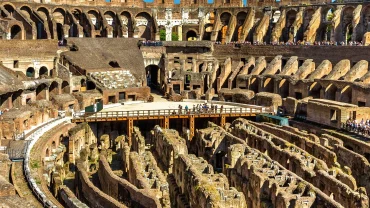Let me tell you a story about the average day of the gladiator in ancient Rome.
Two men ready their weapons. An excited crowd of Romans cheer loudly in anticipation. Both combatants realize full well that this day might be their last.
They are gladiators, men who fight to the death for the enjoyment of others.
As the two gladiators circle each other, each knows that his objective is to maim or trap his opponent rather than to kill him quickly. What’s more, the fight must last long enough to please the crowd.
The gladiators jab swords and swing maces. They sweat in the hot sun. Sand and dirt fly. Suddenly, one gladiator traps the other with a net and poises to kill him with a three-pronged trident. The victor waits for a sign from the crowd. If the losing gladiator has put up a good fight, the crowd might choose to spare his life — and the vanquished gladiator will live to fight another day. But if the crowd is dissatisfied with the losing fighter — as was usually the case — its dissatisfaction meant slaughter.




Comment (0)